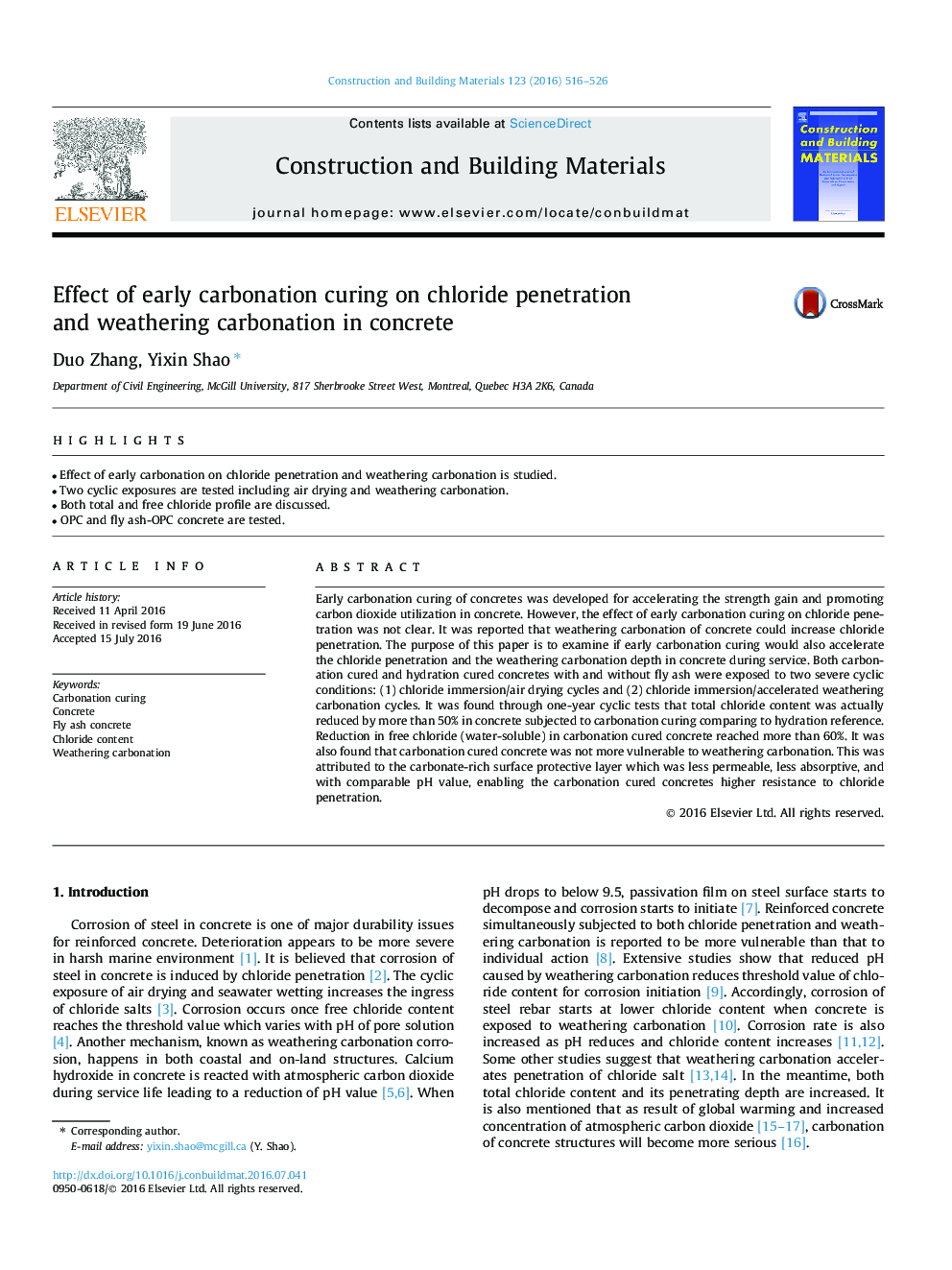| Article ID | Journal | Published Year | Pages | File Type |
|---|---|---|---|---|
| 255777 | Construction and Building Materials | 2016 | 11 Pages |
•Effect of early carbonation on chloride penetration and weathering carbonation is studied.•Two cyclic exposures are tested including air drying and weathering carbonation.•Both total and free chloride profile are discussed.•OPC and fly ash-OPC concrete are tested.
Early carbonation curing of concretes was developed for accelerating the strength gain and promoting carbon dioxide utilization in concrete. However, the effect of early carbonation curing on chloride penetration was not clear. It was reported that weathering carbonation of concrete could increase chloride penetration. The purpose of this paper is to examine if early carbonation curing would also accelerate the chloride penetration and the weathering carbonation depth in concrete during service. Both carbonation cured and hydration cured concretes with and without fly ash were exposed to two severe cyclic conditions: (1) chloride immersion/air drying cycles and (2) chloride immersion/accelerated weathering carbonation cycles. It was found through one-year cyclic tests that total chloride content was actually reduced by more than 50% in concrete subjected to carbonation curing comparing to hydration reference. Reduction in free chloride (water-soluble) in carbonation cured concrete reached more than 60%. It was also found that carbonation cured concrete was not more vulnerable to weathering carbonation. This was attributed to the carbonate-rich surface protective layer which was less permeable, less absorptive, and with comparable pH value, enabling the carbonation cured concretes higher resistance to chloride penetration.
